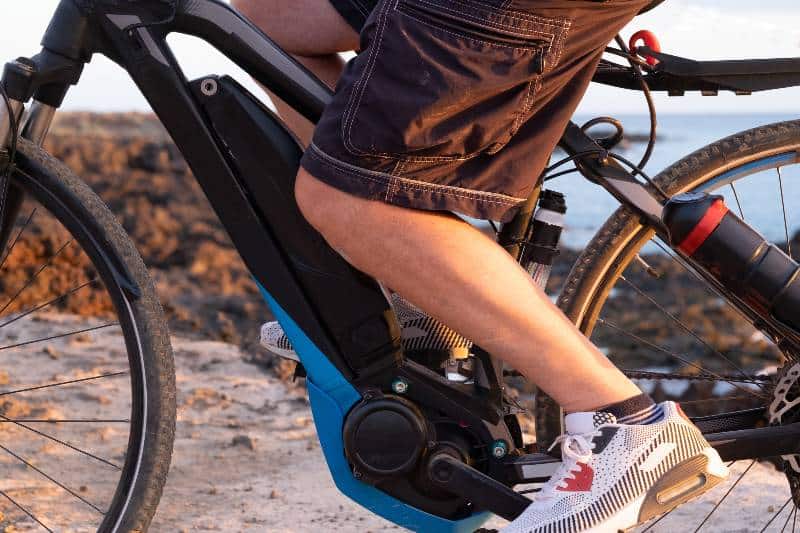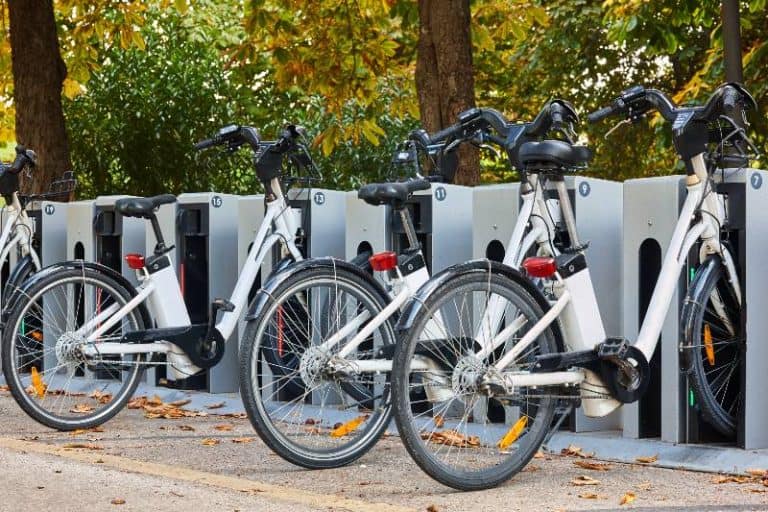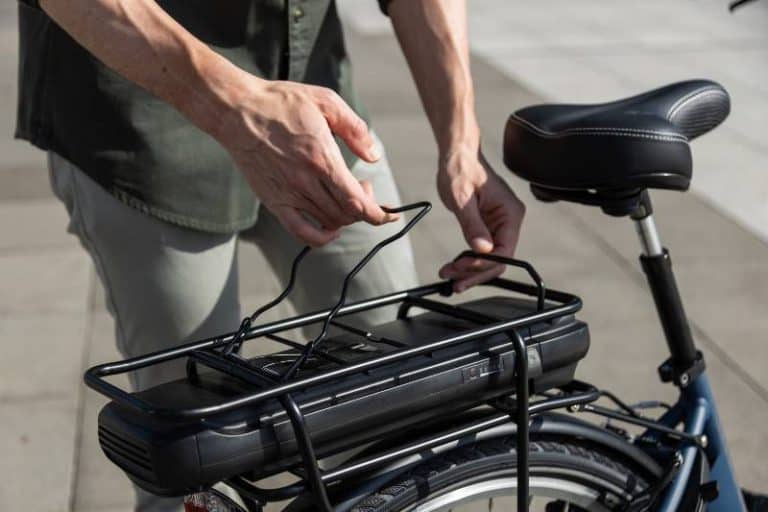Rules of the Road: Best Practices for E-Bike Users
Are you an active e-biker, or someone who’s considering buying an e-bike? If so, then it’s important to remember that the rules of the road still apply when you’re on two wheels. With more and more people turning to these alternative modes of transportation due to high gas prices and environmental concerns, it’s essential that we all share the roads in a safe and courteous manner. To help make sure everyone is being a responsible e-bike rider, here are some tips for proper electric bike etiquette and best practices!
To ride safely, cyclists should follow the same rules as drivers, such as stopping at traffic lights and riding in the same direction as traffic. Prior to riding, it’s important to practice basic maneuvers like slowing down, stopping, and mounting/dismounting the bike to get comfortable with it.
Key Takeaways
- Understanding and adhering to E-bike etiquette and best practices not only ensures a safe and legal ride but also fosters a positive perception of the E-bike community.
- E-bikes, while similar to traditional bicycles, have specific considerations due to their motor assistance, making awareness of proper etiquette and best practices essential.
- Promoting responsible E-bike riding can contribute positively to the community and environment, reiterating the importance of following recommended etiquette and practices.
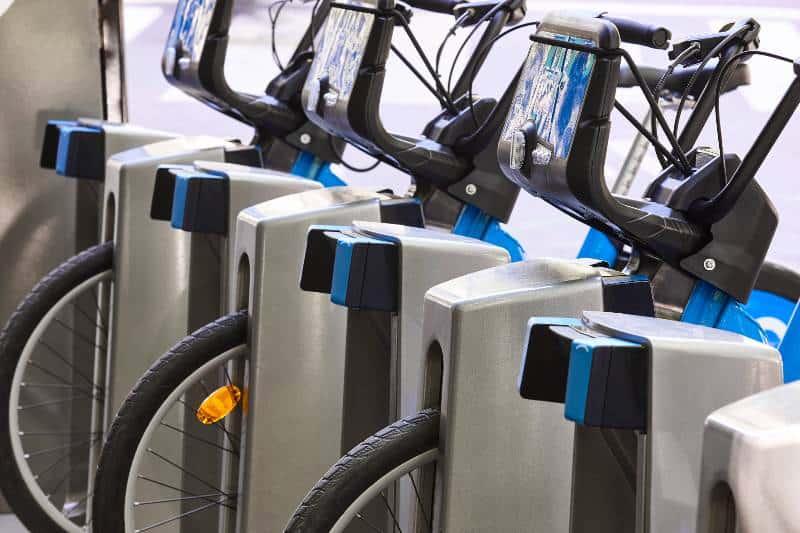
E-bike Etiquette
General etiquette for all cyclists
Cycling has long been a popular mode of transport, fitness, and leisure activity worldwide. With the advent of electric bikes, or e-bikes, a whole new dimension has been added to this sector. This opens up a range of benefits but also certain considerations that need to be kept in mind. Let’s talk about the general etiquette for all cyclists, special considerations for e-bike riders, and understanding and respecting pedestrian rights.
Firstly, it’s crucial for all cyclists to adhere to a few foundational guidelines. For instance, always remember to obey traffic laws. Bicycles are considered vehicles in many jurisdictions, meaning that cyclists should follow the same rules as motor vehicles. This includes stopping at red lights, using designated bike lanes where available, and signaling your intentions to other road users. For example, if you’re about to make a left turn, you should extend your left arm out horizontally to signal your move clearly.
Additionally, it’s essential to maintain situational awareness. Regularly check over your shoulder for approaching vehicles, and be aware of the potential for car doors to open suddenly. A common hazard in urban cycling is ‘dooring’, where a car door is opened in a cyclist’s path without warning. To illustrate, imagine you’re cycling down a city street with parked cars on your right. You’re in what’s called ‘the door zone’ – the space within which a suddenly opened car door can reach.
To mitigate this risk, you might choose to ride a little further out into the lane, forcing you to be aware of both the parked cars and any overtaking traffic.
In terms of cycling etiquette, a golden rule is to be respectful of other riders. If you’re cycling in a group, ride in a single file or at most two abreast, depending on the law in your area, and never hog the road. In case you need to pass a slower cyclist, do so on their left and give them ample warning of your intention, either by ringing a bell or using your voice.
Special considerations for E-bike riders
Now, for e-bike riders, there are some extra considerations. Given the added speed potential of e-bikes, it’s critical to control your pace, especially when around other cyclists or pedestrians. For instance, if you’re cycling on a shared pathway with pedestrians and traditional cyclists, it’s crucial to maintain a moderate speed, even if your e-bike is capable of going faster. Your enhanced speed can surprise others and create dangerous situations.
Remember, just like with traditional bikes, e-bike riders need to signal their intentions, especially when changing speed or direction suddenly. Moreover, e-bike riders should use the additional power judiciously and responsibly. To illustrate, consider a scenario where you’re cycling uphill on a narrow path with other cyclists. With your e-bike, you have the advantage of additional power, but you should avoid using this to overtake other cyclists without plenty of space and giving clear signals.
Understanding and respecting pedestrian rights
Lastly, let’s talk about pedestrians. Pedestrians typically have right of way on most pathways and crossings, and it’s important to respect this. Never assume that pedestrians have seen you or can predict your actions. For instance, if you’re approaching a zebra crossing where pedestrians are waiting, it’s your responsibility as a cyclist (traditional or e-bike) to stop and allow them to cross.
In crowded areas, dismount and walk with your bike. This is especially important for e-bikes, given their extra weight and speed potential. For instance, imagine you’re in a busy market area where people are walking slowly and children are running about. In this scenario, the appropriate action would be to dismount from your e-bike and walk it through the crowd.
Remember, a major part of cycling etiquette, regardless of the type of bike you’re on, is about being predictable, being visible, and communicating clearly with everyone else sharing the road or path. By being respectful and attentive, we can all contribute to a safer, more enjoyable environment for cyclists, e-bikers, and pedestrians alike.
Best Practices for E-bike Riding
Electric bikes, or e-bikes, have grown increasingly popular due to their blend of convenience, accessibility, and sustainability. They provide a fantastic way to commute, explore, and stay fit. However, to ensure a safe and enjoyable experience, e-bike users should adhere to several best practices. Here, we will cover safety measures, legal considerations, and environmental consciousness.
Safety measures
- Wear Proper Safety Gear: Even before you hit the road, wearing appropriate safety gear is paramount. This includes a correctly fitted helmet that meets safety standards, reflective clothing for visibility, and gloves for better grip. Also consider protective eyewear to shield your eyes from dust, insects, and harsh sunlight. For example, a helmet isn’t just for protecting your head in case of a fall, but can also enhance your visibility to motorists when fitted with reflective elements or lights.
- Maintenance and Pre-ride Checks: Regular maintenance is key for any vehicle, and e-bikes are no exception. Check your bike’s tire pressure, brakes, lights, and battery status before each ride. You should also have a professional periodically service your bike, focusing on the electrical components and drivetrain.
- Ride Defensively: Riding defensively means assuming that other road users might not see you or predict your moves. Stay vigilant, keep a safe distance from vehicles, pedestrians, and other cyclists, and be prepared for sudden changes in your surroundings.
Legal considerations
- Understand Local Laws: Laws and regulations for e-bikes vary by city, state, and country. Some places treat e-bikes as conventional bikes, while others categorize them similarly to motorized scooters. You should understand local traffic laws, bike lane rules, and helmet regulations. For example, in some cities, e-bikes may be restricted from certain paths or trails where traditional bikes are allowed.
- Proper Licensing and Insurance: Depending on your locality, you might need a specific license or insurance to ride an e-bike. Make sure to fulfill these requirements to avoid fines or legal issues.
- Age and Speed Restrictions: Some regions have age restrictions for e-bike riders and limit the speed at which e-bikes can travel. Keep these in mind when purchasing an e-bike or riding in different areas.
Environmental consciousness
- Battery Disposal: E-bike batteries should not be thrown away with regular household waste. Many cities have designated e-waste collection centers or recycling programs that handle battery disposal in an environmentally friendly manner.
- Energy Efficiency: While e-bikes are more energy-efficient than cars, the way you use your e-bike can still impact its efficiency. Using pedal-assist mode instead of full-electric mode when you can, helps extend your battery life and reduces the frequency of recharges.
- Sustainable Commuting: E-bikes present an excellent opportunity to reduce reliance on cars for short to medium-distance journeys, contributing to lower carbon emissions.
For instance, instead of driving your car to the local grocery store, consider taking your e-bike. This small change, when adopted by many, can lead to substantial reductions in carbon emissions and urban congestion, making our cities cleaner and more liveable.
Riding an e-bike comes with responsibilities. From safety measures like wearing the right gear and performing regular bike checks to understanding local laws to considering environmental impacts, it’s important that e-bike users strive to ride responsibly. By doing so, you’ll contribute to a safer, healthier, and more sustainable community.
The Importance of Community
The importance of community, particularly within the context of the E-bike sphere, cannot be overstated. In essence, the community brings together individuals who share a common interest, in this case, E-bikes, fostering a sense of camaraderie and mutual understanding. This shared sense of identity and purpose not only cultivates a vibrant and collaborative ecosystem but also propels the development and advancement of the E-bike industry as a whole.
By adhering to established etiquette and best practices within the E-bike community, members can ensure that they contribute positively to this shared environment. These etiquettes may encompass aspects such as safety, maintenance, and ethical use of E-bikes, to name a few.
For instance, abiding by traffic rules while using E-bikes not only ensures the safety of the rider but also of others on the road. Similarly, regular maintenance of E-bikes, according to the guidelines provided by manufacturers, contributes to the longevity of these vehicles, further reducing environmental impacts, and saving resources.
On a broader scale, the regular exchange of ideas and knowledge within the community can lead to innovative solutions to problems and improvements in the design and function of E-bikes. For example, members of the community might share their experiences about battery life or the efficiency of a certain E-bike model.
This information can be crucial for manufacturers in refining their products, ultimately leading to better user experiences and increased adoption of E-bikes.
Moreover, community actions have a substantial impact on the perception of the E-bike industry, both among its members and the wider public.
The conduct of E-bike users can heavily influence how others perceive the industry. For example, if members of the E-bike community are observed frequently breaking traffic rules or misusing these vehicles, it could tarnish the image of the industry and discourage potential users. Conversely, responsible and ethical usage of E-bikes can foster a positive image, encouraging more people to consider these environmentally friendly alternatives to traditional transportation.
Similarly, the E-bike community plays a crucial role in advocating for the industry. Through organized efforts, they can lobby for improved infrastructure for E-bikes, such as dedicated bike lanes, charging stations, and more. They can also help dispel misconceptions about E-bikes and educate the public about their benefits, thereby encouraging wider acceptance and use.
Transparency, knowledge sharing, and cooperation within the E-bike community also play a vital role in influencing the policies and regulations that govern the industry. Community discussions, debates, and consensus can serve as valuable feedback to policymakers and regulators, ensuring the enacted rules are realistic, fair, and beneficial to the growth of the E-bike industry.
In conclusion, the E-bike community plays a crucial role in shaping the industry’s growth and development. By adhering to the community’s established etiquette and best practices, members can ensure a positive and nurturing environment.
Furthermore, the actions of the community have a direct and profound impact on the perception and advancement of the E-bike industry, making it a key stakeholder in the pursuit of more sustainable and efficient forms of transportation.
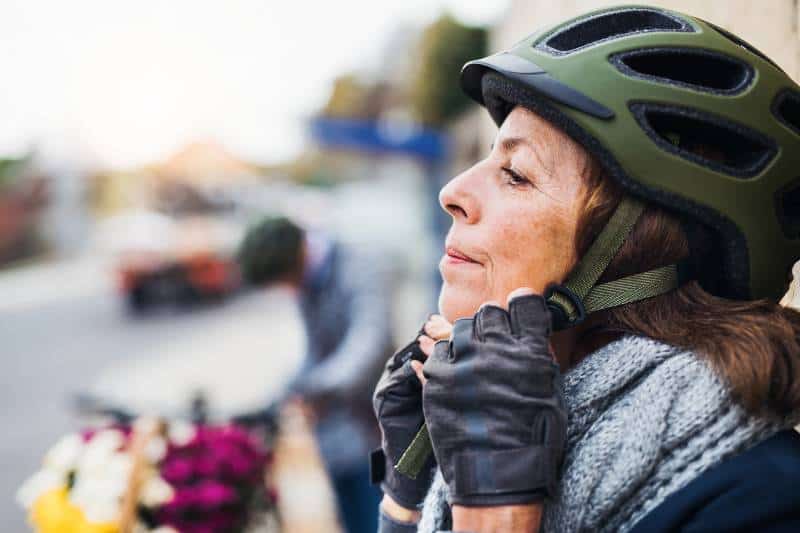
E-bike Etiquette and Best Practices FAQs
What are the legal considerations for E-bike riders?
Each country, state, or region has its own laws governing the use and ownership of E-bikes. These may include age restrictions for riders, speed limits, insurance requirements, registration rules, penalties for breaking traffic laws, and more. It is important to familiarize yourself with the relevant regulations in your area to ensure you are riding legally.
Are E-bikes allowed on sidewalks and pedestrian paths?
The rules around riding E-bikes on sidewalks and pedestrian paths vary from place to place. Generally speaking, most jurisdictions do not allow motorized versions of E-bikes on sidewalks or pedestrian paths, as these can pose a danger to pedestrians. It is always advisable to check with your local authorities for details on the specific regulations in your area.
How does E-bike riding contribute to environmental sustainability?
E-bikes are a much more sustainable and eco-friendly form of transportation compared to traditional automobiles. They typically require no fuel (apart from electricity to charge the battery) and produce significantly fewer emissions than cars do. This means that E-bike riders can reduce their carbon footprint and help make cities greener, cleaner, and more livable places.
What maintenance practices are necessary for E-bikes?
Regular maintenance of an E-bike is essential for its performance, safety, and longevity. This may include cleaning the bike regularly, checking the brakes and tires, changing the battery when necessary, and other tasks as outlined by the manufacturer’s guidelines. Additionally, it is important to store and charge E-bikes correctly to ensure their optimal performance.
How can I promote responsible E-bike riding in my community?
The best way to promote responsible E-bike riding is to serve as a role model yourself. Always obey traffic laws and respect pedestrians when using your E-bike, and encourage others in your community to do the same. Additionally, you can organize or participate in local awareness campaigns that educate people on both the benefits and risks associated with E-bikes.
Conclusion
E-bikes are an exciting and revolutionary way to explore the outdoors. Many of the best practices around e-bikes also mirror traditional bicycle etiquette, but it’s important to remember that these small motors complicate matters when it comes to safety, legality, and public perception. We urge all E-bikers to be mindful and respect the environment and community in which they are riding so as to keep everyone safe and happy.
Not only is this good for the community and environment, but it can help protect against the negative stigma associated with electric bikes. Let us all take responsibility for our actions as E-bike riders and make sure we do our part in promoting responsible riding habits. To stay up-to-date on any news or changes related to E-bike legalities or etiquette, consider signing up for our newsletter!
